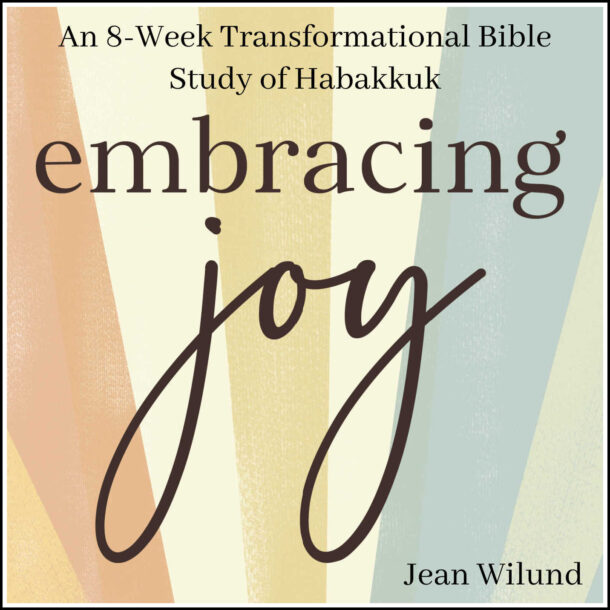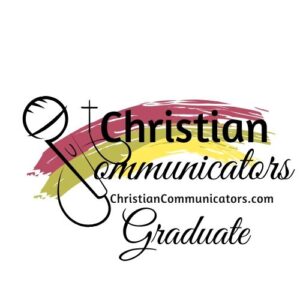
Did you know that there have been around 900 different English versions of the Bible in publication since the first English Bible was printed?1
This explains why, when I bought my first Bible, I stood before the wall labeled “Bibles” and gasped.
How could I choose? And what did all those initials on them mean? KJV, ESV, LMNOP?
After a grueling process of “eeny, meeny, miny, moe,” I picked a Bible with a pretty cover and lots of notes at the bottom of each page. (I still didn’t know what the initials meant.)
Are you about to head to the bookstore (or, more likely, your laptop) to buy a Bible?
The process may overwhelm you if you’re not prepared because choosing one has never been more complicated.
We have more options but fewer bookstores where we can hold a Bible and flip through its pages. I’d love to help you take out some of the guesswork so you can make your decision based on more than a pretty cover.
Let’s start with the basics.
What’s the Difference between Bible Versions and Translations?
The terms translation and version are used synonymously just about everywhere. But while a translation is a version, a version is not necessarily a translation.
And just because a Bible version uses the word “translation” or “Bible” in its title, this doesn’t mean it’s a translation or a Bible.
Have I confused you? I’ll clear it up below.
Versions
Let’s start with the easiest category—a version. Any book that calls itself a Bible is a version.
Simple enough, right?
Some versions are faithful to the original texts God gave the human authors. Others fall into the how-can-they-even-call-this-a-Bible category, such as the cat “translation.” (Don’t ask.)
The number of versions explode once we include the various types available—study Bibles, devotional Bibles, journaling Bibles, literary Bibles, chronological Bibles, and so on. It’s dizzying and exciting.
Translations
A Bible translation is a version of the Bible that’s been translated from the original languages (Hebrew, Aramaic, and Greek) into another language so people can both read the Bible and understand its meaning.
Faithful translators follow rigorous guidelines to help them choose words that reflect the truest meaning of the original words. To accomplish this, they must do a small amount of interpreting, which cracks the door to possible misinterpretation.
Thus, the most reliable Bible translations are the result of years of work by a team of scholars working to remain faithful rather than by an individual. A translator working alone has no one to hold them accountable or challenge them on their translation or interpretation.
Bible translation is a complicated process because the original languages include ancient sentence structures, grammar practices, and idioms that leave us scratching our heads today.
Confusing Idioms
Consider the Hebrew idiom, the “little man of the daughter of your eye” in Psalm 17:8.
Say what?
This Hebrew phrase is translated into English as, “the apple of the eye.”
This phrase makes sense to English speakers—we call our children, the apple of our eye. But someone from a different language might think this translation is just as confusing as the original Hebrew.
Rare Words
Some original words are so rare they don’t appear anywhere else in the Bible. They’re called “hapax legomena.”
These words can leave even the best translators puzzled. At the end of the day, they do their best to choose words that are reliable and remain faithful to the original text.
When it comes to translating the Bible, I can’t think of more important words than faithful and reliable.
So you can fill your library with the best versions, let’s look at the translation process.
(Some of you just groaned. You don’t want to know about Bible translating processes. You just want to know which Bibles to buy. I promise this will help.)
The Three Main Translation Methods
Bible translations vary from those that allow the least amount of interpreting the original words’ meanings to those that allow full freedom of expression.
Across the spectrum, Bible translators use one of three main translation methods:
1. Word-for-word (a.k.a. literal or formal equivalence)
2. Thought-for-thought (a.k.a. functional equivalence, dynamic equivalency, or paraphrases)
3. Free-thought (by a modern author)
1. Word-for-Word Translation Method
Goal: The goal of the word-for-word translation process is not to interpret the Bible—not to tell you what the author meant. The goal is to find the best words or phrases that fit the author’s original intent while keeping as close as possible to the original sentence structure—all without sacrificing understanding. (This will make more sense in a second.)
Translators start with an interlinear translation of each verse. An interlinear is basically a list of the translated words placed in line with the original words. (Usually directly below them.) The original sentence structure remains intact, which can create interesting sentences.
Let’s look at an interlinear translation of Matthew 1:18:
Matthew 1:18 (Interlinear): “of moreover Jesus Christ the birth in this manner was after having been engaged the mother of him Mary to Joseph before to come together they she was found with a stomach having from the spirit holy”
Unless you’re already familiar with this passage, you probably have no idea what the author is trying to say.
Now let’s look at how the the New American Standard Bible (NASB) translated Matthew 1:18 using the word-for-word method:
Matthew 1:18 (NASB): “Now the birth of Jesus the Messiah was as follows: when His mother Mary had been betrothed to Joseph, before they came together she was found to be pregnant by the Holy Spirit.”
Benefits: Word-for-word translations tend to be the most reliable because editors don’t attempt to interpret the authors’ intent. They simply say what the authors said while also making it easier for modern readers to understand what the author said. These can be some of the best translations for in-depth Bible study depending on the quality of the translator team’s work.
Challenges: The reading can be clunky at times. Sometimes the meaning of the passage can be harder to grasp due to ancient idioms, unfamiliar literary devices, and/or cultural references. (Such as the confusing idiom we looked at above: the “little man of the daughter of your eye” in Psalm 17:8.)
Popular Word-for-Word Translations: New American Standard Bible (NASB), Amplified Bible (AMP), English Standard Version (ESV), Revised Standard Version (RSV), King James Version (KJV), and New King James Version (NKJV).
Note about the Interlinear Translation: I wouldn’t want to read an interlinear Bible, but an interlinear translation is helpful when we want to know the exact word used in the original.
Consider the English word “love.” In English we have one word for love, but in Greek they have three.
What kind of love was an author talking about in the original Greek? The friendship kind of love (philia)? Romantic kind of love (eros)? Or sacrificial and forever love (agape)?
2. Thought-for-Thought Translation
Goal: The goal of the thought-for-thought translation process is to provide the authors’ original meaning of the sentence more than simply translating the words.
Scholars don’t ignore the original sentence structure, but they’ll move the words around if they feel it helps convey the original meaning to modern readers.
Let’s look at how the Christian Standard Bible translated Matthew 1:18 using the thought-for-thought method.
Matthew 1:18 (CSB): The birth of Jesus Christ came about this way: After his mother Mary had been engaged to Joseph, it was discovered before they came together that she was pregnant from the Holy Spirit.
Benefits: Thought-for-thought translations are typically more readable and understandable than word-for-word translations while still seeking to maintain strict faithfulness to the original inspired text.
Challenges: To create a thought-for-thought translation, translators must first discern the overall meaning of the original passage. In other words, they must interpret the passage more than the word-for-word method requires.
No matter how sincere their efforts are, they may be sincerely wrong. Additionally, sometimes the original word intentionally carries more than one meaning.
Thought-for-thought translations can inadvertently lose these dual meanings by taking the reader in one specific direction.
Popular Thought-for-Thought Versions: Holman Christian Standard Bible (HCSB), Christian Standard Bible (CSB), New Revised Standard Version (NRSV), New International Version (NIV), New Living Translation (NLT), and New English Translation (NET).
3. Free-Thought Version
Goal: In a free-thought version, an author takes the overall message of the biblical text into consideration, determines what they believe it means, and then expresses it in modern lingo.
A free-thought version is not a translation. It’s not really even a paraphrase. It’s more like a commentary. Or a retelling of the Bible in storybook form.
Authors often remove ancient cultural references and replace them with modern culture. For instance, where the NASB and CSB refer to God’s Word as a “lamp” in Psalm 119:105, the free thought version The Living Bible calls it a “flashlight.”
At times, the author winds up choosing words that move the text away from the biblical author’s inspired message and muddies the meaning.
For example, consider how the thought-for-thought CSB translated Matthew 5:14:
You are the light of the world. A city situated on a hill cannot be hidden.
Now look at how the free-thought version The Message translates the same verse:
You’re here to be light, bringing out the God-colors in the world.
While the verse in The Message sounds lyrical, it muddies the original—and clear—message.
What are “God-colors”? How do we “bring them out”? And what happened to “the hill” the original author mentioned?
Let’s look at how The Message translated Matthew 1:18.
Matthew 1:18 (MSG): The birth of Jesus took place like this. His mother, Mary, was engaged to be married to Joseph. Before they enjoyed their wedding night, Joseph discovered she was pregnant. (It was by the Holy Spirit, but he didn’t know that).
Benefits: Free-thought versions are typically the easiest to read. They can be helpful as long as the reader approaches them as a commentary, a retelling of a Bible story, or an overview.
Challenges: Free-thought versions reflect the modern author’s opinion, not necessarily God’s. They can at times be vastly different than the original inspired text. If the modern author’s theology isn’t faithful to biblical theology, the reader can be seriously misinformed.
Free-thought versions are commentaries and retellings, not translations, thus I don’t recommend one as your main Bible.
Some free-thought versions use the word “Translation” or “Bible” in their title. This can mislead us into thinking we’re reading God’s inspired Word rather than the creator’s free thoughts about the Bible.
Popular Free-Thought Versions: Good News Bible (GNB), Contemporary English Version (CEV), The Living Bible (TLB), The Message (MSG), The Passion Translation (TPT).
Note: The Passion Translation is not a translation, but rather a very loose free-thought version that I encourage readers to avoid. For more information, check out this article, this article, this article, or this one.
How to Determine the Version and Translation of a Bible
The first two steps of choosing a Bible are to determine the version of the Bible you want and the translation. Here’s how you can tell which is which.
- Version: The title of the Bible typically tells us what version of a Bible it is, such as if it’s a study Bible, devotional Bible, or journaling Bible. Each version of a Bible may come in several translations.
For instance, the MacArthur Study Bible includes study notes and commentary written by Pastor John MacArthur. It’s available in the NASB, ESV, NKJB, and NIV translations. - Translation: The initials on the Bible (or the spine or title page) typically tell us what translation of the Bible it is, such as in English the CSB (Christian Standard Bible), NASB (New American Standard Bible), ESV (English Standard Bible), and NKJV (New King James Version).
What Do I Need to Know about Study Bibles?
Study Bibles typically contain notes, commentaries, and many other tools written by either a team of Biblical scholars or by an individual.
These tools provide us with interpretations of Bible passages, biblical doctrine, and a wealth of other helpful resources to understand the Bible.
A Study Bible with the name of a person connected to it does not mean the individual translated the Bible. It means they provided the study notes and commentary.
As I mentioned above, the MacArthur Study Bible includes study notes and commentary written by Pastor John MacArthur. It’s available in the NASB, ESV, NKJB, and NIV translations.
(Dr. MacArthur is also working with a team of translators on a new translation project called the Legacy Standard Bible using the word-for-word method.)
Lord willing, in 2024, Holman Bibles is coming out with a CSB translation of a devotional study Bible featuring Nancy DeMoss Wolgemuth (founder of Revive our Hearts ministry) as the General Editor for the study notes.
Study Bibles without the name of a person on them—such as the ESV Study Bible and the Reformation Study Bible—contain notes and commentary by a team of Biblical scholars.
The goal of reading and studying the Bible isn’t to conquer the Bible but to let the Bible conquer us.
Bottom Line: Which Bible Version Is Best for Me?
The goal of reading and studying the Bible isn’t to conquer the Bible but to let the Bible conquer us.
Developing the vital habit of reading the Bible widely (cover to cover) and studying it deeply is an investment that pays rich dividends in our hearts and minds.
There are multiple versions of the Bible to help us, thus a better question to ask than which Bible version is best for me, is which version is best for your next Bible purchase. (I’m a big believer in having access to a variety of Bibles.)
Your current Bible needs will help lead your next Bible purchase:
- Your First and only Bible? Consider word-for-word or thought-for-thought translations of a study Bible.
- In-depth Bible study? Consider study Bibles in word-for-word translations.
- Personal Bible reading? Consider word-for-word or thought-for-thought translations of a study Bible.
- Teaching a Bible study? Consider a word-for-word or thought-for-thought translation with wide margins for your teaching notes.
- Diving into one Book of the Bible? Consider a single book version of whatever you’re studying, such as Habakkuk or John. These versions typically provide lots of space for notes on each page.
- Performing a drama of a Bible story or teaching children? Consider a free-thought version to help present the story to a modern or younger audience. (But first carefully study the passage in a word-for-word or thought-for-thought translation. And remember that not all free-thought versions of the Bible are faithful to the original text. They change the Bible to make it say what they want it to say.)
A Few of the Bibles in My Library
Each morning I read from one of my study Bibles using a Bible Reading Plan.
The three study Bibles I currently switch between are the MacArthur Study Bible, the ESV Study Bible, and the Reformation Study Bible.
Thanks to a kind gift from a friend and her pastor husband who helped me write this article, I’ve added the Thompson Chain Reference Bible to my collection. It’s been wonderfully helpful in my studies.
On Sundays I take a full-size, but thin, Bible to church. It fits into my purse but doesn’t require a magnifying glass to read.
When I’m teaching a Bible study, I use a Bible with extra-wide margins. I can write my teaching notes in the margins or plop in a few sticky notes without covering up the text.
A dear friend sent me a gorgeous journaling Bible for my birthday. I’m in love!
Whichever version and translation you use, remember that the Bible is the inerrant and inspired Word of the living God—in the original languages. This means it is error-free in the original language and the very words of God given to His authors.
Each day, let’s soak our hearts and minds in the eternal, faithful, reliable, and all-sufficient Word of God.
The grass withers, the flowers fade,
but the word of our God remains forever.
—Isaiah 40:8
Related Articles: What if We Interviewed Your Bible?

A version of this article first appeared on Revive Our Hearts.
1“Number of English Translations of the Bible: Articles: News: American Bible Society,” American Bible Society News, accessed May 17, 2022, https://news.americanbible.org/article/number-of-english-translations-of-the-bible.







Thank you for this thorough explanation, Jean. I knew some of this content but learned new facts as well. As always, you remind us of the centrality of the Bible in our walk with Christ.
This is such a wonderful resource for those trying to make sense of all the different choices. I”m book marking this for the next time someone asks me to explain!
I’m so glad it’s helpful. If I’d known some of this sooner, I would have saved myself some money. But then again, it’s led me buy others I didn’t plan to buy. LOL.
Jeannie, the more I learn about the Bible, the more amazed I am by it, and the more passionate I am to learn even more about it—and from it.